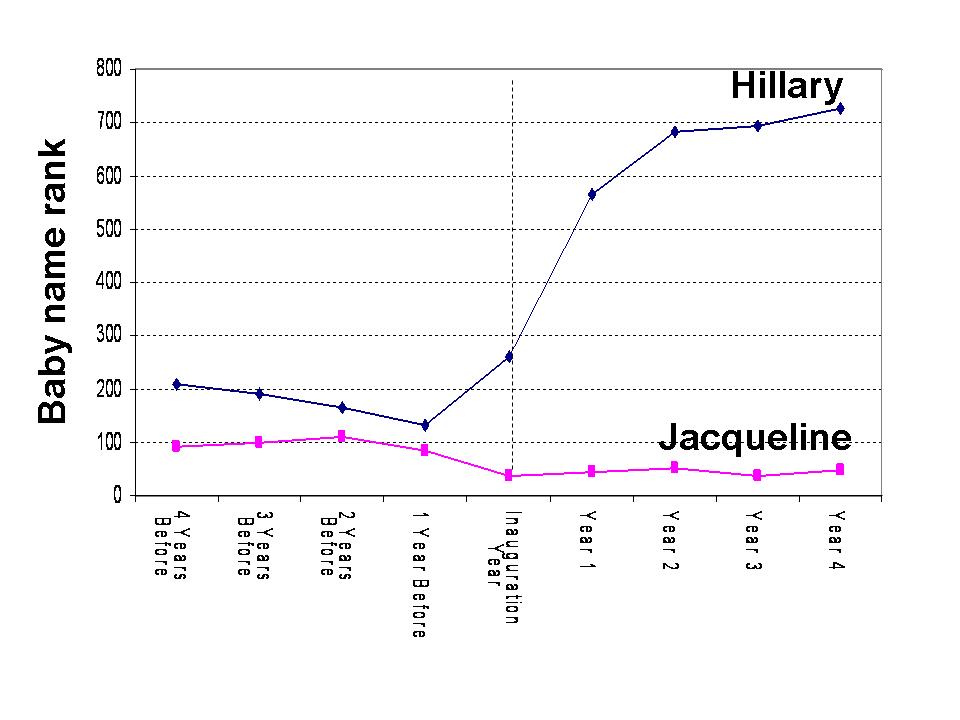Previously we examined the relationship between the elected president and how parents named baby boys by comparing the popularity of the president’s first name before he began serving versus after he began serving (see technical note below for the limitations in this method). For example, Franklin was only the 147th most popular name in 1931 but two years later it had jumped to being ranked 33rd as parents increasingly named their children after FDR.
Specifically, we defined the “presidential baby name bounce” as the difference between the average ranking in the four years after a president took office (post-inauguration) to the average ranking in the four years before the president took office (pre-inauguration). We observed the following:
From Woodrow Wilson to Lyndon Johnson, eight out of nine presidents saw a positive baby-naming bounce where positive means Americans were more likely to name children using the president’s first name after the president took office. Starting with Richard Nixon and ending with George Bush (43), there have been seven presidents. For each of these seven presidents, the “presidential baby name bounce” has been negative, not positive. That is to say, before Richard Nixon, parents generally were more likely to name children after the new president but starting with Nixon, the trend reversed and parents became less likely to name children after the president.
The biggest positive bounces were for Woodrow and Franklin.
We examined the same question using first ladies’ names and found a very different pattern. For the last 21 first ladies (starting with Ida McKinley), only four had a positive bounce. It is important to emphasize that this negative baby bounce should not be over-interpreted. When looking at the data as a time-series such as the graph below, we observed that for most of these names, there was a declining trend before the first lady took her role and that the first lady’s name generally didn’t appear to have much of an impact on baby naming.
That is with two major exceptions:
The only first lady with a major positive bounce was Jacqueline, a reflection of how the American public was captivated by Jacqueline Kennedy. This is reflected in the Jacqueline curve below from a pre-inauguration popularity ranking ranging from 85 to 111 to a post-inauguration range of 37 to 51 as the baby name become more popular.
The first lady with the most dramatic negative swing was Hillary, a drop in popularity that was certainly linked to the timing of Bill’s inauguration and her prominence on the public stage. Hillary was the 132nd most popular girls name in 1992 but has been out of the top 500 since 1994. In the curve below you can see the popularity rank of Hillary as a baby name moved from a pre-inauguration range of 132 to 209 to a post-inauguration range of 566 to 725 as the baby name became less popular. Spelling the name Hilary instead of Hillary had little change on the popularity trend. Hillary went from being the 233 most popular baby girl’s name in 1992 to being out of the top 1000 since 1994.
Higher rank means the name is less popular

This striking effect of many American parents avoiding naming their children Hillary is a reflection of how polarizing a figure Hillary Clinton was (and still remains today)
Technical note: The baby bounce metric is a pre-post comparison without controls which does not account for time trends. The same data set was examined as an interrupted time series, where we looked to identify if the pattern of name ranking over time experienced a change starting with the inauguration year. This method allows us to control for pre-inauguration trends. The data was acquired from the Social Security Online website
